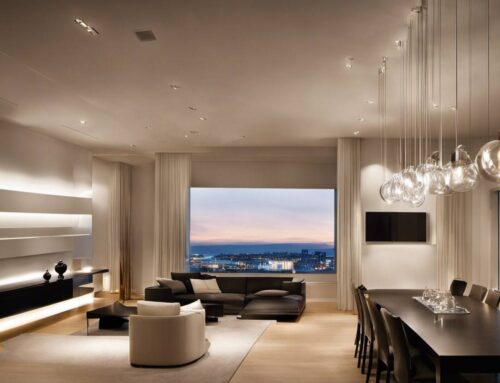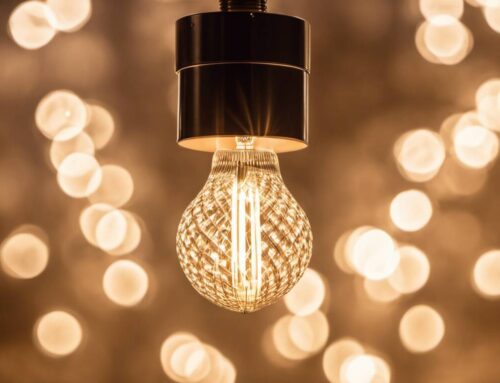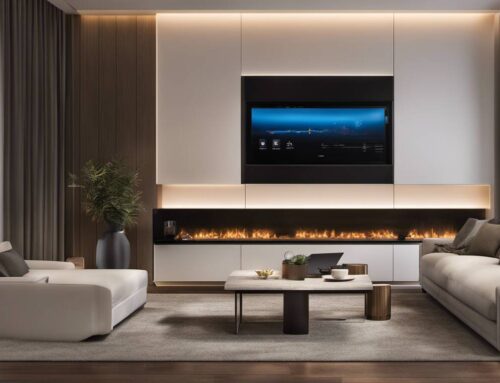Imagine a life without light at night, quite unnerving, wouldn’t it be? Artificial lighting has revolutionized our lifestyles, providing illumination round the clock. But as with anything, while it boasts several benefits, there are also some drawbacks that need to be acknowledged and understood. Discover the full spectrum of artificial lighting in this blog post as we unfold its advantages and disadvantages – unlocking the power of light like never before. So whether you’re selecting lights for your office or home, you’ll know precisely what you’re signed up for. Buckle up for an enlightening journey into the world of artificial lighting!
The advantages of artificial lighting include extended hours of productive activity, increased safety and security, control over lighting intensity and color temperature, and the ability to create mood and ambiance. The disadvantages include higher energy costs, potential health risks from exposure to blue light, decreased visual acuity, limited spectrum compared to natural light, and negative impact on sleep quality. It is important to strike the right balance between artificial and natural lighting to achieve optimal results for your well-being and productivity.
Artificial Lighting: The Pros
Artificial lighting has become an integral part of our modern society, providing us with the convenience and flexibility to illuminate our indoor and outdoor spaces. Let’s explore some of the key advantages of artificial lighting.
Extended Hours of Productivity: One of the most significant benefits of artificial lighting is its ability to extend our working hours beyond daylight. This is particularly important in regions with shorter days or in professions that require round-the-clock operations, such as hospitals or manufacturing plants. Artificial lighting enables us to continue with our tasks efficiently and effectively, regardless of the time of day.
Versatility and Control: Unlike natural light, artificial lighting offers a wide range of options for controlling brightness, color temperature, and even directionality. With advancements in technology, we now have access to various types of light bulbs, including incandescent, fluorescent, LED, and halogen lights. These options allow us to create different moods and atmospheres in our living spaces, making them more functional and aesthetically pleasing.
Imagine coming home after a long day at work. You can dim the lights to create a cozy and relaxed ambiance while enjoying a book or watching your favorite movie. Similarly, in a professional setting, adjustable overhead lights can be used to enhance concentration during important meetings or presentations.
It’s like having an artist’s palette at your fingertips – you have full control over how you want your space to look and feel using artificial lighting.
Increased Safety and Security: Artificial lighting plays a crucial role in enhancing safety and security both indoors and outdoors. Well-lit areas deter potential intruders or criminals by eliminating hiding spots. Additionally, bright lights in public spaces improve visibility for pedestrians and drivers alike, reducing the risk of accidents.
Consider walking through a well-illuminated parking lot compared to a poorly lit one. The latter can leave you feeling uneasy and vulnerable, while the former offers a sense of security due to increased visibility and decreased blind spots.
Flexibility in Design: Artificial lighting allows designers and architects to unleash their creativity by incorporating innovative lighting designs into various structures. Whether it’s utilizing LED strips for under-cabinet lighting or installing smart bulbs that can change colors with a tap on your smartphone, artificial lighting opens up endless possibilities for aesthetically pleasing and functional designs.
While artificial lighting undoubtedly offers numerous benefits, we must also be aware of its potential downsides. In the next section, we will explore the disadvantages of artificial lighting and how they can impact human health and security.
Artificial Lighting’s Benefits for Human Health and Security
Artificial lighting not only illuminates our surroundings but also has profound effects on our overall well-being and safety. Let’s delve into some key benefits of artificial lighting for human health and security.
Enhanced Visibility at Night: Artificial lighting allows us to navigate our surroundings safely during nighttime, reducing the risk of accidents or falls. Streetlights, outdoor floodlights, and well-illuminated public spaces contribute significantly to improved visibility, making it easier for pedestrians and drivers to move around with confidence.
Improved Mood and Productivity: Properly lit environments have been shown to positively impact our mood, motivation, and overall productivity. Brighter lights can stimulate alertness, helping us stay focused and engaged. Moreover, well-designed artificial lighting can mimic natural daylight, which has been linked to enhanced mood and increased serotonin levels.
Think about working in a dimly lit office space versus one bathed in natural light or well-designed artificial lighting. The former might leave you feeling lethargic or drowsy, while the latter provides an energizing atmosphere that enhances your performance.
Promotes Safety in Workspaces: In industrial or construction settings where tasks require precision and attention to detail, artificial lighting provides consistent and reliable illumination. This helps workers identify potential hazards, avoid accidents, and maintain a safe working environment.
Imagine an assembly line where workers need to inspect and assemble small components. Adequate artificial lighting ensures that they can perform their tasks accurately, reducing the risk of errors and injuries.
Increased Sense of Security: Artificial lighting contributes significantly to our sense of security in both public and private spaces. Well-lit environments discourage criminal activities by creating a perception of visibility. Bright lights also enable surveillance cameras to capture clear images, aiding law enforcement in identifying potential threats.
Walking down a well-lit street at night can make us feel safer and more confident compared to poorly lit areas shrouded in darkness, reducing the fear of potential crime.
Artificial Lighting: The Downsides
Artificial lighting undoubtedly plays a significant role in our lives, providing illumination when natural light is not available or insufficient. However, it is crucial to understand and acknowledge the downsides associated with artificial lighting. One major drawback is that many artificial lights tend to produce light at a smaller range of wavelengths compared to sunlight, which contains light across the visible and non-visible spectrum.
This narrower range of wavelengths in artificial lighting can have various implications. For instance, it may impact our overall well-being by affecting our sleep patterns, as certain wavelengths of light can disrupt our natural circadian rhythm. Exposure to blue light from electronic devices or bright artificial lights before bedtime can suppress the production of melatonin, a hormone that promotes sleep. This interference with our sleep-wake cycles can lead to insomnia and other sleep disorders.
Another downside of artificial lighting is its potential negative impact on our mental health. Natural lighting has been associated with improved mood and reduced symptoms of depression, while gloomy artificial lighting may contribute to feelings of sadness or lethargy. Humans are inherently connected to nature, and depriving ourselves of natural light for extended periods can have detrimental effects on our psychological well-being.
Moreover, artificial lighting consumes a significant amount of energy, contributing to environmental concerns such as increased carbon emissions and global warming. Traditional incandescent bulbs, known for their inefficiency and short lifespan, have largely been replaced by more energy-efficient options like LED lights. While LEDs offer longer lifespans and reduced energy consumption, they still pose challenges in terms of material extraction and manufacturing processes, which have their own ecological impact.
Now that we have explored some of the downsides of artificial lighting, let’s delve into the environmental and economic impacts associated with it.
- While artificial lighting is undoubtedly important and often necessary, it is essential to recognize the potential negative impacts it can have on our well-being, particularly in terms of our sleep patterns and mental health. Furthermore, artificial lighting contributes to environmental concerns such as increased energy consumption and pollution. It is crucial to consider and address these downsides when using artificial lighting in our daily lives.
Environmental and Economic Impacts of Artificial Lighting
Artificial lighting has undeniable benefits; however, it also has significant environmental and economic consequences that cannot be ignored. The primary concern lies in the energy consumption and subsequent carbon emissions associated with artificial lighting. According to studies, lighting accounts for approximately 15% of global electricity consumption. The energy requirements for maintaining artificial lights contribute to a considerable carbon footprint, as most of the electricity generated is produced through fossil fuel combustion.
These environmental impacts extend beyond just carbon emissions. Production and disposal of artificial light sources, particularly those containing hazardous materials like mercury (commonly found in fluorescent bulbs), pose risks to both human health and the ecosystem. Proper handling and recycling of such lighting products are necessary to mitigate the potential harm caused by their components.
Furthermore, the economic impact of artificial lighting should not be overlooked. High energy consumption directly translates to increased electricity bills for individuals and businesses alike. Moreover, maintaining and replacing artificial lights can be costly, especially in large-scale settings such as commercial buildings or outdoor public spaces.
For instance, imagine a small business struggling to meet its financial obligations due to hefty electric bills from prolonged operational hours that rely heavily on artificial lighting. It becomes evident how the economic burden of artificial lighting can strain resources and hinder growth.
It is important to consider these environmental and economic aspects surrounding artificial lighting as we strive for sustainable practices and reduced energy consumption. Exploring alternative lighting solutions or adopting efficient lighting technologies can help mitigate these impacts while still meeting our lighting needs.
Now that we have understood the downsides and environmental-economic impacts of artificial lighting, let’s continue our exploration by contrasting it with natural lighting and examining their respective advantages and disadvantages.
Comparing Artificial Lighting with Natural Lighting
Artificial lighting has revolutionized the way we illuminate our indoor spaces, providing the ability to work, study, and enjoy leisure activities even in the absence of natural light. However, when comparing artificial lighting with its natural counterpart, several factors come into play that influence the overall experience and impact on our well-being.
One crucial aspect is the quality of light emitted by both sources. Natural lighting comes from the sun, which provides a broad spectrum of wavelengths across the visible and non-visible spectrum, including infrared and ultraviolet. This full spectrum of light is essential for our physiological and psychological well-being. On the other hand, artificial lights tend to produce light at a smaller range of wavelengths compared to sunlight.
Despite advancements in lighting technology, it’s challenging for artificial lights to replicate the exact qualities of natural light. For instance, while modern LED lights can mimic the color temperature of sunlight (around 5000K), they often lack the same intensity and frequency makeup. Sunlight produces a wide range of light frequencies, whereas artificial light generally produces a narrower range.
Let’s explore three important aspects when comparing artificial and natural lighting: brightness, wavelength, and intensity.
Quality of Light: Brightness, Wavelength, and Intensity
When it comes to brightness, natural lighting holds a distinct advantage. Sunlight illuminates our surroundings with a high level of brightness that makes colors appear vibrant and true. In contrast, artificial lighting can sometimes feel gloomy due to insufficient brightness on walls and ceilings. It may not adequately reveal the room’s true colors or create an inviting atmosphere.
The wavelength composition of light also differs between artificial and natural sources. Different devices and organisms have specific wavelength requirements for optimal use of light. For instance, plants primarily use red light for photosynthesis. Under artificial lights that don’t produce much red light, plants may struggle to grow unless the lamp is designed to emit sufficient red light.
Regarding intensity, natural sunlight is considerably more powerful than artificial lighting. The sun’s intensity provides high levels of brightness and supports various biological processes. While artificial lights may not match the intensity of the sun, they can still provide adequate illumination for most daily activities.
It’s worth noting that the evolution of artificial lighting technology has led to significant improvements in quality. For example, LED “grow” lights that combine blue and red wavelengths have proven effective for indoor plant growth. Moreover, advancements in lighting design and engineering have allowed artificial lights to be more energy-efficient and longer-lasting compared to traditional incandescent bulbs.
Consider a scenario where you are working on a project that requires precise color representation, such as graphic design. Natural lighting would provide you with the truest colors, allowing you to make accurate decisions about hues and shades. In this case, relying solely on artificial lighting might lead to misjudgment.
In contrast, artificial lighting offers flexibility and control over our environment. We can adjust the brightness, color temperature, and even install smart lighting systems that simulate natural patterns throughout the day. This versatility allows us to adapt the lighting conditions according to our needs and preferences.
- As per the U.S. Department of Energy, around 75% of electricity usage in commercial buildings is attributed to artificial lighting systems.
- The International Association for Energy-Efficient Lighting reports that LED lights, a common type of artificial light, use about 75% less energy than incandescent lighting.
- According to the World Health Organization (WHO), excessive exposure to artificial light at night can disturb human’s circadian rhythm leading to sleep disorders affecting approximately 50-70 million adults in U.S.
Evolution of Lighting: Past, Present, and Future
The evolution of lighting has played a significant role in shaping our living spaces, enhancing productivity, and improving the quality of life. From the humble beginnings of firelight to the modern-day innovations, lighting technology has come a long way. To fully understand the advantages and disadvantages of artificial lighting, it is crucial to explore its evolution through the past, present, and future.
In ancient times, humans relied solely on natural light sources such as sunlight during the day and fire at night. However, with advancements in technology and civilization, humans began to experiment with different methods to artificially illuminate their surroundings. The invention of oil lamps and candles marked an important milestone in artificial lighting. While these sources were effective in providing light during nighttime, they posed various challenges such as limited duration and safety hazards.
Imagine living in a time where your only source of light at night was a flickering candle that needed constant attention to prevent accidents. Lighting conditions were far from ideal for tasks that required focused illumination.
Fast forward to the 19th century when electricity revolutionized lighting technology with the invention of incandescent bulbs by Thomas Edison. These bulbs used heated filaments to emit light when electric current passed through them. Incandescent lights gained popularity due to their affordability and immediate availability. However, they were not energy-efficient and had a significantly shorter lifespan compared to newer options.
Today’s lighting landscape witnesses the dominance of LED (light-emitting diode) and fluorescent lights. Let us explore the introduction of these technologies along with the advantages they offer.
The Introduction and Advantages of LED and Fluorescent Lights
The emergence of LED and fluorescent lights brought about a paradigm shift in artificial lighting solutions. LED lighting has rapidly grown in popularity and is commonly used in commercial spaces, industrial settings, schools, hospitals, and residences. These lights are energy-efficient, consuming up to 80% less energy than traditional incandescent bulbs, resulting in significant cost savings over time. Furthermore, LED lights have a remarkably long lifespan and higher durability, making them a reliable and sustainable lighting choice.
Just imagine the convenience of installing LED bulbs in your home and potentially never having to worry about replacing them for over 20 years. The longevity of these bulbs offers both cost savings and peace of mind.
Fluorescent lights, on the other hand, have been widely used for decades due to their efficiency and bright illumination. They work by passing an electric current through mercury vapor, which then emits ultraviolet light that is converted into visible light through the phosphor coating inside the bulb. Fluorescent lights are known for their low energy consumption and prolonged lifespan compared to incandescent bulbs.
| LED Lights | Fluorescent Lights | |
|---|---|---|
| Energy Efficiency | Highly efficient, consuming up to 80% less energy | Efficient, consuming significantly less energy than incandescent bulbs |
| Lifespan | Long-lasting with an average lifespan of over 20 years | Prolonged lifespan compared to incandescent bulbs |
| Light Quality | Offers diverse color options with excellent color rendering ability | Provides bright illumination but may produce harsh or flickering light |
| Environmental Impact | Contains no mercury or harmful gases, environmentally friendly | Contains trace amounts of mercury, requires special disposal methods |
As we have examined the introduction and advantages of LED and fluorescent lights, it is important to acknowledge that each lighting technology comes with its own set of disadvantages and considerations.




